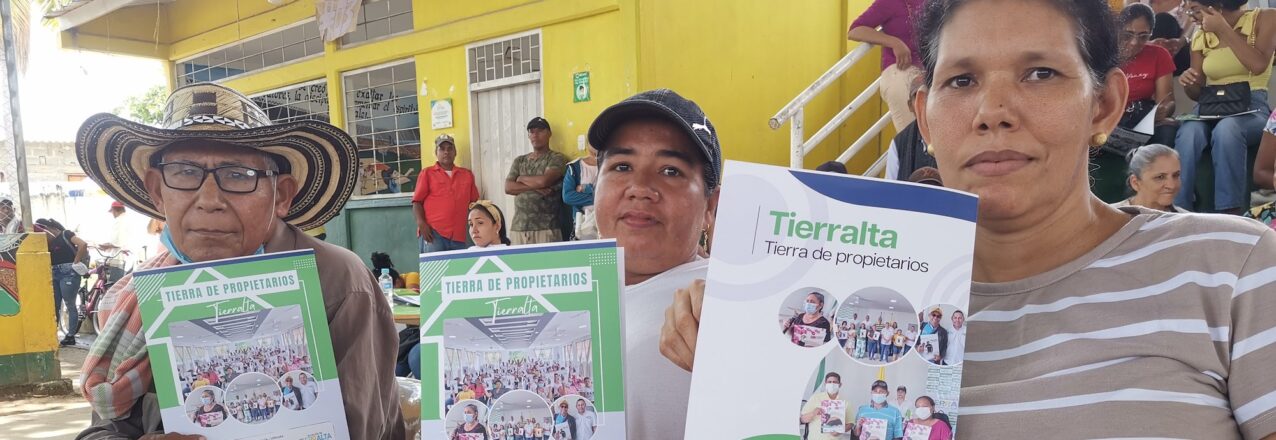Violence in Colombia has displaced families towards informal settlements. USAID is helping the government to deliver land titles to these families and respond to their needs.
Before 9 de Agosto was a barrio, it was open land on the edge of Tierralta, a town in Colombia’s Caribbean plains. The more than 40 hectares of land belonged to a local power company, and then one night, on August 9th, it became home to 3,000 desperate people. They arrived and never left.
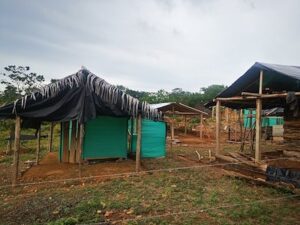 The invasion occurred in 2010, and Jairo Gómez was there. He was one of a multitude of victims and families displaced by the violence that had engulfed their region and pushed them out of their homes. Gómez pounded in wooden posts, hung a tarp and hammock, and braced himself for the inevitable backlash. In less than a week, the police showed up with teargas and violence to evict the families. Gómez stood his ground.
The invasion occurred in 2010, and Jairo Gómez was there. He was one of a multitude of victims and families displaced by the violence that had engulfed their region and pushed them out of their homes. Gómez pounded in wooden posts, hung a tarp and hammock, and braced himself for the inevitable backlash. In less than a week, the police showed up with teargas and violence to evict the families. Gómez stood his ground.
A City of Cambuches
“It was a city of cambuches,” Gómez says, using the local word for shelters made from plastic sheeting.
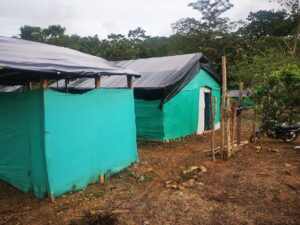 Social leaders emerged, and soon they were laying lines to create the lots for dwellings and future roads. By the end of the first year, 5,000 people lived in 9 de Agosto, which anywhere else was known as the barrio de los desplazados, or displaced people.
Social leaders emerged, and soon they were laying lines to create the lots for dwellings and future roads. By the end of the first year, 5,000 people lived in 9 de Agosto, which anywhere else was known as the barrio de los desplazados, or displaced people.
That’s how a neighborhood is born in the 21st century Colombia, as shanty towns built with plastic coverings and scrap wood and carved out of open lands along major roads or near towns. The county has grown this way over the last 20 years due to the conflict that has made Colombia home to a population of more than 6 million internally displaced people (IDP)—second only to Syria—and made Colombia the country with the highest number of IDPs and the least number of refugee camps.
In 2017, the local power company traded the land to the municipality, and local leaders set up services like electricity for some of the more than 4,000 parcels. Today, many shacks and tarps have been replaced by cinder blocks and bricks. Those who can afford it, have added zinc sheets to their roofs to protect them from the heavy tropical rains. Others remain the same as they were in 2010, plastic sheeting, wooden planks, and dirt floors, simple cambuches.
Titling the Properties
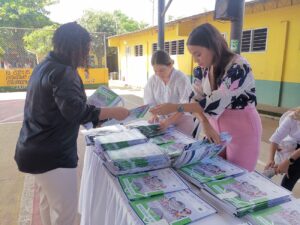 This year, with USAID support Tierralta made a giant step towards incorporating the neighborhood into the town’s masterplan by titling more than 260 parcels. The event featured Mayor Daniel Montero delivering property titles to a packed auditorium, and was significant on several levels. First, as a clear example of the government providing families with a tangible asset that will inevitably lead to improvements in their neighborhood; second, the event represents the single largest delivery of land titles made by a municipal administration in the history of Colombia. “The wait times for government services are slow and you can never get everything done, but today we have fought for something beautiful,” Montero said to the crowd. “A land title will bring you new opportunities and hopefully bring peace, happiness, and hope to your homes.”
This year, with USAID support Tierralta made a giant step towards incorporating the neighborhood into the town’s masterplan by titling more than 260 parcels. The event featured Mayor Daniel Montero delivering property titles to a packed auditorium, and was significant on several levels. First, as a clear example of the government providing families with a tangible asset that will inevitably lead to improvements in their neighborhood; second, the event represents the single largest delivery of land titles made by a municipal administration in the history of Colombia. “The wait times for government services are slow and you can never get everything done, but today we have fought for something beautiful,” Montero said to the crowd. “A land title will bring you new opportunities and hopefully bring peace, happiness, and hope to your homes.”
Local Land Administration
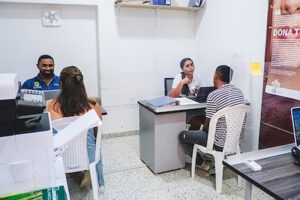 The Colombian government has struggled to facilitate land planning in areas affected by the conflict or to provide residents with services to legalize the properties of informal settlements like 9 de Agosto.
The Colombian government has struggled to facilitate land planning in areas affected by the conflict or to provide residents with services to legalize the properties of informal settlements like 9 de Agosto.
In 2021, USAID helped Tierralta reactivate its Municipal Land Office, which employs a team of land experts and surveyors who live in the municipality and work under the municipal Secretary of Planning. Under Colombian land law, municipalities have the power to process the titling of urban properties, including public properties like schools and health centers.
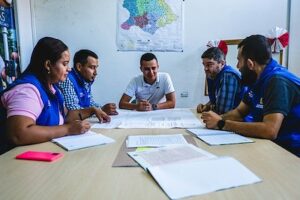 With USAID’s support, Tierralta’s Municipal Land Office has improved its capacity to title urban property and reduced processing times from multiple years to just a few months. Key to the process is the improvement in communication and work flow between land agencies, or in this case with Colombia’s property registry authority, the Superintendence of Notaries and Registers (SNR). By working directly with the regional SNR office, Tierralta’s Land Office can title dozens of properties at a time.
With USAID’s support, Tierralta’s Municipal Land Office has improved its capacity to title urban property and reduced processing times from multiple years to just a few months. Key to the process is the improvement in communication and work flow between land agencies, or in this case with Colombia’s property registry authority, the Superintendence of Notaries and Registers (SNR). By working directly with the regional SNR office, Tierralta’s Land Office can title dozens of properties at a time.
For every single property, the SNR requires a physical verification of the property as well as the property’s history. Municipal Land Offices are fulfilling these tasks.
“In municipalities with land offices supported by USAID, we see that we are delivering more titles, and our goals are achieved in a more agile and comprehensive manner.It is really important that there are professionals working in these municipalities, because this work will not be done from Bogotá. Municipal Land Offices are facilitating the cooperation between our offices,” says María José Muñoz, who works in the SNR as a Delegate for Land Protection, Restitution and Formalization.
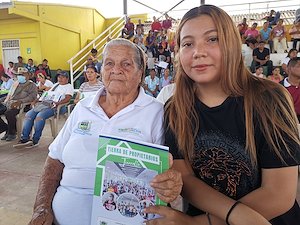 Since 2020, 42 USAID-supported Municipal and Regional Land Offices delivered over 6,800 land titles to families living in the urban areas of rural municipalities. In addition, the land offices have formalized more than 1,600 public properties and provided land and property services to more than 16,000 citizens.
Since 2020, 42 USAID-supported Municipal and Regional Land Offices delivered over 6,800 land titles to families living in the urban areas of rural municipalities. In addition, the land offices have formalized more than 1,600 public properties and provided land and property services to more than 16,000 citizens.
Cross-posted from USAID Exposure


